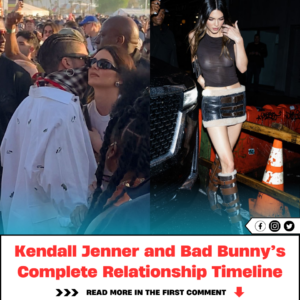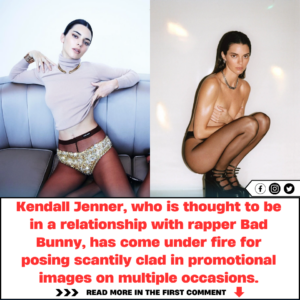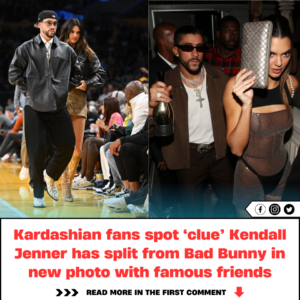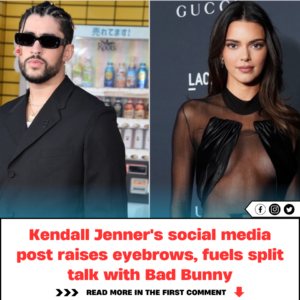Although hip hop has made the phenomenon of ‘flexing’ popular, it’s common across professions and eras, from Picasso to Cristiano Ronaldo. Putting on a façade to impress people is also loaded with interpretations related to class and art that go beyond the surface
/cloudfront-eu-central-1.images.arcpublishing.com/prisa/ITXCDF25JJAJ5MUHGJHUSEI7XQ.jpg)
Bad Bunny emanates wealth on the red carpet of the 2023 Met Gala.SEAN ZANNI (PATRICK MCMULLAN VIA GETTY IMAGE)
Fronteo — or the Spanish translation for “fronting” or “flexing” — is a popular slang term rooted in reggaeton and urban music. It defines the attitude of showing off power and status and appearing superior to others.
After Bad Bunny dropped his latest album — Nadie sabe lo que va a pasar mañana — “flexing” has re-entered the public discourse. With this collection, the Puerto Rican singer has returned to trap music. All of the songs in the album have shot to the top of Spotify, reaffirming that nobody is better than Bad Bunny when it comes to the art of proclaiming himself as the king of the world.
“I’m glad that Bad Bunny, once again, did whatever he wanted to do,” tweeted Héctor Elí, a journalist specializing in urban music. “He let off some steam; he said what he thinks, no-holds-barred. The audience — as always — is gossiping about who was disrespected [in the songs] and who wasn’t. It’s a trap album, it’s called flexing and it’s part of the show,” he added. Elí was apparently referring to the beef that Bad Bunny has had with Colombian singer J Balvin, after apparently dissing him in the song Thunder y Lighting. According to the music journalist, all of the drama is part of the genre’s intrinsic codes.
The notion of two singers verbally confronting each other through their lyrics isn’t far off from past centuries, when rival poets would exchange blows in verse. However, flexing doesn’t require a specific rival to exist. Rather, it’s more of a manifestation of status and self-affirmation that reinforces the artist’s personal mythology. From Nadie sabe — the track that opens the album with an intimate and confessional tone — Bad Bunny places the listener in a reality in which there’s no one above him. “And it’s true, I’m not a trapper, nor a reggaeton player. I’m the biggest star in the whole world,” he sings boastfully (in Spanish, of course).
In the music video that accompanies the next trap song — Monaco, number four on Spotify at the time of the writing of this article — Bad Bunny sits down to eat at Al Pacino’s table in a restaurant. What follows is an ostentatious display of luxury cars, casinos, yachts, supermodels… and even the Mexican Formula 1 driver, Checo Pérez. There’s a specific moment in the lyrics in which Bad Bunny ascends to an astral plane of opulence when recounting his supposed conversations with LeBron James and Leonardo DiCaprio about “millionaire issues” or “billionaire issues.”
“When I flex, I can’t even stand myself,” warns Benito Antonio Martínez Ocasio — the real name of the Puerto Rican artist — in his song 25/8. Music manager José Andrés Pérez believes that flexing is something inherent to the urban genre. “Maybe younger or new fans don’t understand it, but it’s part of this culture,” he notes. Furthermore, according to him, wherever there’s flexing, you can usually find some humble origins. “We mustn’t forget that the urban genre was born in the lower classes… it opened doors and a future for these [artists]. With flexing, what you’re doing is showing off, or feeling proud of who you are or what you’ve achieved with effort and hard work, coming up from below.”
For Pérez, authenticity is another crucial concept for flexing to work: “It has to be real. Many people try to copy this style and boast about things they don’t have, or sing about things they haven’t experienced. In my opinion, that sounds cheesy and isn’t credible. You need to set an example — you have to have known hunger, you have to have accumulated certain achievements.”
His indisputable status in the music industry places Bad Bunny in an unrivalled position for ostentation: “On a technical level, there may be someone better than him,” Pérez admits. “But due to his position [in the industry], it’s impossible for anyone to flex more than Bad Bunny. He’s the singer who has broken all the records and is number one in the world in the Latin market.”
In the world of music, ostentation is present in a wide variety of genres, with all kinds of tastes on display. In reggaeton, there are classic songs such as Yo puedo con todo (”I can do everything”) by Don Omar, while others directly address the experience of showing off, such as Fronteamos porque podemos (“We flex because we can”) by De La Ghetto. In the field of more traditional rap, Eminem — who saw the peak of popularity in the first decade of the 2000s — even stated in a song that he felt like the God of rap. Kanye West — before being canceled for his insane behavior and hateful comments — composed a song titled I Am a God. And, in an entire album — The Life of Pablo (2016) — he compared his genius to Pablo Picasso. In a strange interdisciplinary beef, the composer and singer-songwriter Leonard Cohen mocked Yé’s pretensions in a poem: “Kanye West is not Pablo Picasso. I am Pablo Picasso.”
In Spain, one of the most notable practitioners of the art of flexing has been C. Tangana, who — before embracing more classical Spanish music — had an extended career in trap. In one song, he sang: “I make euros fall as if it were January… I’ve changed the industry of an entire country.” Interestingly, his rival on the scene — Yung Beef — made it rain in plaza while promoting his new album, throwing money everywhere.
There’s a fine line between looking like a jerk when proclaiming yourself as the best in the world and — as in the case of Bad Bunny — turning it all into an art that is, in a certain sense, admirable. Tangana experienced this firsthand when he released his song Yate. In the promotional image that he shared on his Instagram account, he appeared surrounded by 10 female celebrities. This choice earned him criticism, as he was using women as objects to demonstrate his success.

Rosalía performing at the Mad Cool Festival in Madrid. GETTY
Men aren’t the only ones who flex, however. Rosalía makes this very clear in her song Sakura: “If you’re 60 and you freak out when a woman flexes, you either haven’t learned anything, or you’ve got a problem.”
Flexing in urban music — especially in genres such as reggaeton and trap — cannot be fully understood without the display of luxurious jewelry and accessories. These elements not only serve an esthetic function: they also become tangible symbols of success, power and social status. In the book Ice Cold: A Hip-Hop Jewelry History — edited by Vikki Tobak, featuring essays by artists such Slick Rick and L. L. Cool J. — it’s noted how, in the past, “it was the pharaohs, immortals and gods wearing jewelry. [Nowadays], these gods [stand out] on the corner of Adam Clayton Powell Jr. Boulevard and West 125th Street.”
Jewelry or luxury cars have become part of a visual narrative that complements the lyrics of songs that seek to maximize flexing. The most extreme example is probably that of the American rapper Lil Uzi Vert, who had a $24 million diamond implanted in his forehead.

Rapper Lil Uzi Vert, posing during the 2023 BET Awards. PARAS GRIFFIN (GETTY IMAGES FOR BET)
The ostentatious display of power and status isn’t limited only to urban music or hip hop. There are fields where this practice is more common and is judged less harshly than in others. NBA players are allowed to extol their own qualities. Tennis players, on the other hand, tend to be more discreet. Soccer players are a mixed bag. This quote by Cristiano Ronaldo comes to mind: “People are jealous of me as I am young, handsome and rich.” Conor McGregor — one of the most high-profile MMA fighters — has made bragging an integral part of his character, going so far as to say things like “Me and Jesus are cool. I’m cool with all the gods. Gods recognize gods.”
Another illustrious flexer was the incomparable Muhammad Ali, who perhaps offered the key to understanding this whole matter: “It’s not bragging if you can back it up.” Madonna has been boasting in her songs for decades about how she’s the queen of pop, wearing a crown that was placed on her head by the public. A song that she collaborated on with Nicki Minaj in 2015 was titled, Bitch, I’m Madonna.
In almost all artistic disciplines (although the general rule is to adopt a discourse of modesty and humility), there’s always been a free verse that’s not afraid to proclaim that one’s work is superior to that of others. For his part, Salvador Dalí — the master of surrealism — said: “If I were less intelligent, I would undoubtedly paint better.”



